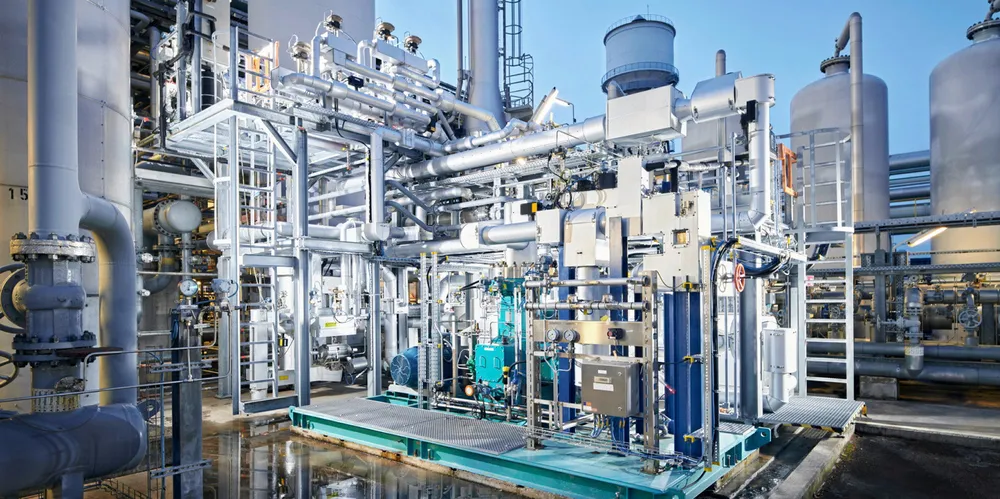'Expensive, wasteful, limited CO2 reduction: Blending hydrogen into gas grid should be avoided'
Adding 20% green H2 to Europe’s distribution networks would increase end-user costs by up to 43%, while cutting greenhouse gases by just 6-7%, says Fraunhofer Institute study

Adding 20% hydrogen to the gas grid — as many distributors and network operators are lobbying for — would increase industry costs by an average of 23.8% across the EU, and up to 43.3% in Portugal, where gas prices are relatively low, the study explains.
Price rises for households would be lower, due to smaller user volumes, with an average 11.2% increase across the EU, rising to 15.9% in Portugal.
“Significantly higher GHG emission reductions of up to 50% can be achieved through the direct application of hydrogen in the transport sector and in industrial applications,” the report says, pointing to their replacement of coal, diesel, bunker fuel and aviation fuel, all of which have higher carbon contents than natural gas.
The institute — which receives funding from the local and national governments, as well as the European Commission — explains that the EU is planning to install 40GW of electrolysers by 2030, which would produce about ten million tonnes, or about 132TWh, of green hydrogen annually.
“Policy makers face a choice of how to cost effectively deploy the limited amounts of green hydrogen that will be available in the medium-term,” the report says. “There are a number of no-regret options for sectors where green hydrogen should be deployed (such as for the replacement of grey hydrogen and in industry or shipping).
“Blending green hydrogen into the grid indiscriminately instead risks ‘wasting’ hydrogen by having it deployed to sectors like heating where more efficient and cost-effective solutions such as direct electrification using heat pumps are possible.”
It continues: “The analysis shows that a 5% blending target within the EU 2030 scenario would require about 50TWh of hydrogen. This represents a significant share of the total green hydrogen (132 TWh) that would be available in 2030 under the [EU] hydrogen strategy.
Fraunhofer also shows a disdain for blue hydrogen produced from fossil fuels with carbon capture and storage.
And it adds: “Due to the declining demand for methane, the existing natural gas pipelines will have to be decommissioned in the long term... therefore, lock-in effects for new investments in gas pipelines also need to be assessed.”
“Introduction in one country in Europe would also force all other countries to take adjustment measures due to cross-border trade and security of supply, or if it is technically permissible, gas trade would have to be restricted.
Technical challenges of blending
The Fraunhofer study points to many potential technical issues resulting from a 20% H2 blend.
Transmission pipelines would be able to cope with mixtures of up to 10% H2, it explains, adding that “higher H2 tolerances may be possible, but depend on the respective pipeline materials”.
Residential gas meters may have calibration issues, while the “long-term durability of elastomer seals is the subject of current research”.
Existing gas compressors could handle a 10% H2 blend, but higher blends would require the adaptation of their impellers and gearboxes — changes that would cost about half the price of new compressors.
There are also “high uncertainties” as to whether existing natural-gas storage sites could cope with 20% hydrogen, especially at aquifer-type caverns where bacteria could create hydrogen sulphide that would both reduce the amount of H2 in storage and potentially damage the site walls.
Domestic gas burners might also need modification to cope with H2 blends over 10%.
The report also refers to a 2019 paper by the German ministry of economic affairs and energy, which stated: “Even small admixture quantities in domains that depend on consistent gas quality (eg, material applications in chemistry) or constant temperatures (eg, glass, ceramics) can pose significant risks for process reliability. Moreover, as hydrogen has 1/3 the calorific value of natural gas, it is not suitable for all high-temperature applications in pure form... we can also anticipate impairments to the energy efficiency of production processes. Consequently, hydrogen admixture is not viewed as a priority option for the applications in the industrial sector.”
The Fraunhofer study goes on to explain that some industries fed by a natural gas/H2 blend would need to remove the hydrogen in order to use the methane, thus facing extra costs.
Just last week, industrial gases company Linde unveiled the world's first full-scale pilot plant able to extract hydrogen from natural-gas blends using a membrane.